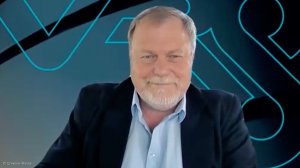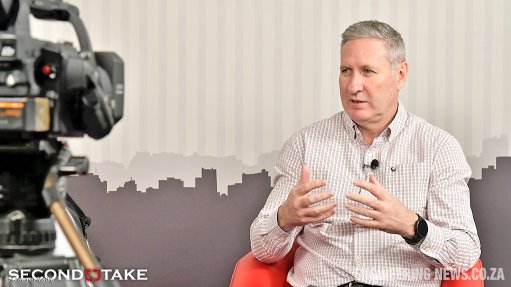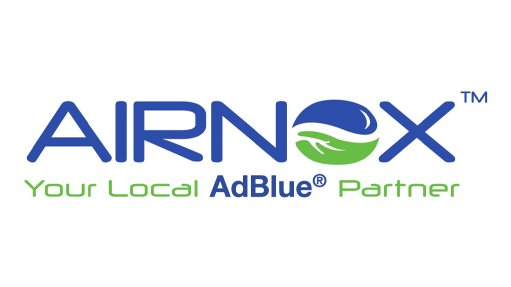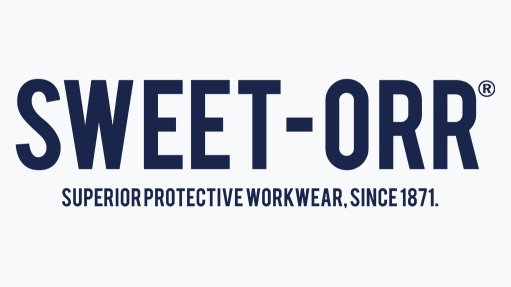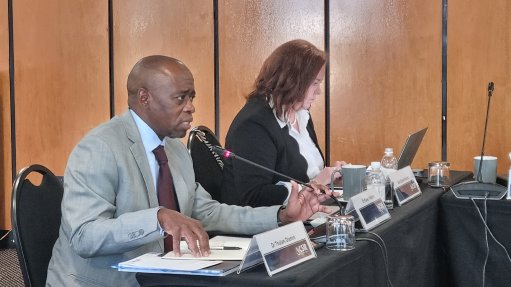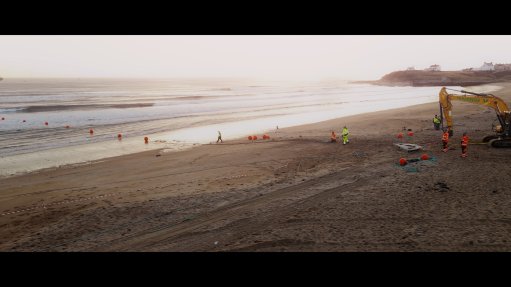Vanadium project’s China link may open way for far-reaching value addition

Vanadium Resources' Jurie Wessels interviewed by Mining Weekly's Martin Creamer. Video: Darlene Creamer.
The relationship that vanadium development company Vanadium Resources (VR8) is striking up with China Energy International Group could give the Steelpoortdrift project developer an answer to many of the downstream opportunities it would be considering.
This would be particularly so within the ambit of electrolyte production and potential vanadium flow battery involvement.
“Something that’s different for vanadium, that’s not so with other resource companies, is that with vanadium you have the possibility of owning the resource even after you have effectively dispossessed yourself of it, in the form of electrolyte being in a battery that you rent out, get back again, and can then resell, which is unusual for mining companies,” VR8 founder and chairperson Jurie Wessels highlighted in a Zoom interview with Engineering News & Mining Weekly.
China Energy, which already has abundant vanadium, is looking to tie up with a resource that, at this stage, is the largest in the world, and probably the highest grade, and then looking at the future and tying that in with what is unfolding within the vanadium flow battery space and mass energy storage.
“That’s the thematic, I think, that might unfold here, which is quite exciting,” added Wessels.
Amid this potential far-reaching business horizon, China Energy and VR8 have signed a memorandum of understanding for engineering, procurement and construction (EPC) services, which with financial assistance becomes an EPCF, for the Steelpoortdrift vanadium project that the Australia-listed VR8 is planning to establish in South Africa’s Limpopo province.
Interestingly, the engineering division of China Energy, which is a major corporation probably 20 or 30 times bigger than Eskom, has developed numerous projects worldwide, not only in power, but also in mining, and this division will be doing the EPCF for VR8 should negotiations culminate in an agreement.
Already involved in the Northern Cape’s upcoming 283 MW Mooiplaats solar power plant, China Energy brings with it a strong balance sheet to attract the right kind of funding.
Moreover, vanadium offtake as well as vanadium flow battery deployment at the Mooiplaats solar plant could be synergies that follow.
Another possibility is production of vanadium electrolyte for sale into China or elsewhere for use in vanadium flow batteries.
“There’s quite a lot that could happen with the relationship that’s unfolding,” an upbeat Wessels commented in estimating the capital cost of the vanadium project VR8 is developing at “about $300-million”.
The Steelpoortdrift project, where a concentrator plant and salt roast leach plant are planned, is located not far from mature operations such as Mapochs and Vantech’s Kennedy’s Vale in the eastern Bushveld Complex.
To be mined will be three layers of the upper zone of the Bushveld Complex, where the magnetites reside.
Unlike past producers, VR8 will be mining the so-called massive pure magnetite part of the orebody. The concentrator plant, through which the material will pass, will have a three-stage crushing circuit to remove the gangue to avoid having a messy product entering the milling circuit.
Once milled, water-based magnetic separation and filtration will provide a concentrate containing about 2.1%vanadium pentoxide, which would then go into a salt roast leach plant.
There, sodium sulphates will be mixed with the concentrate ahead of being heated in a kiln and thereafter leached with water.
Desilication will then offer the option of further processing through two production circuits, an A circuit and a B circuit – one a batch circuit, and the other continuous, with the focus on two different products, the batch circuit producing a vanadium oxide (V205) powder, which carries a premium for being particularly suited to vanadium flow batteries, and the other V205.
“Those are the end products that we would be producing, but we could also just stop at the A and B production and sell that, if that’s what’s required,” Wessels outlined.
Engineering News & Mining Weekly: How many people will be employed during construction and then permanently?
Wessels: It’s difficult to say exactly how many jobs will be created, but if I had to take a swipe at it, about 50 people would be involved with the construction side of things for both the concentrator and the salt roast leach plant, and then about 300 people would be needed to run both plants, once they are running fully operationally. We would be dependent on the local workforce. There are numerous mines in that area and that makes our job a bit easier. But we also wish to upskill the local population, get them involved. That’s going to be quite a focus for us, and we’re designing the plant to cater for that.
How much financial assistance will China Energy provide?
At this stage, the focus would be on the F of the EPCF component, which is their balance sheet, which banking institutions would take into consideration before providing us with the funding. They could also be interested at some point to become involved as a strategic investor. That’s not excluded entirely, but that’s still not yet finalised. With the presence that they give to us in particularly the vanadium flow battery component, there’s also the possibility of attracting alternative equity funders that would then be interested in particularly the relationship that we would have with China Energy, and what that might bring.
What other funding is required and where will it be sourced?
Besides the bank lending components, which could be up to 65%, the rest would be equity funding, and that would then happen with respect to a strategic investor or from company funds. There’s no other real way of doing it, except for ultimately putting your hand in your own pocket and moving on with it, with the banking institution funds being used for the construction.
When will the first vanadium be produced?
With the current trajectory, we expect that to be in the beginning of 2028 and that’s providing for the delays that we experienced by virtue of changing the location of our salt roast leach plant to Steelpoortdrift and optimisations that we had to give effect to on the salt roast leach and at the concentrator plant.
Will the vanadium plant be powered by the Mooiplaats solar plant?
We’ll hopefully be powering our plant through a wheeling transaction with China Energy, with respect to their Mooiplaats solar plant. That is part of the benefit of dealing with China Energy. We need about 17 MW of power. They could also construct a solar plant for us on site to supplement that requirement. Working with China Energy is opening up a lot of other avenues for us to get to the energy component that we need.
What is your comment on the new standard that has been imposed by China for vanadium steel rebar?
It’s long overdue. They proposed that to a lesser extent in 2017 and the reasoning behind it was to make sure that the buildings that they build don’t crumble and fall because vanadium supplies the ductility that’s needed for rebar. There was an opt-in period for the current standards that were imposed this week for five or six years and that has now culminated in a regulation. It’s projected that it would require about an additional 14 000 t of vanadium pentoxide for the market, and it’s expected to have quite a beneficial effect on the pricing environment, as it had previously in 2017, when there was a spike in the vanadium price, resulting directly from these rebar requirements.
Mineral Resource
VR8’s Steelpoort project has a mineral resource of 680-million tons at an average in-situ grade of 0.7% V205, equivalent to 4.74-million tons of contained metal, and a proved and proven ore reserve of 77-million tons at an average grade of 0.72%, equivalent to 0.55-million tons of contained metal.
Concentrate will be transported to the nearby Tweefontein project, with the aim of producing an average of 18 000 t of V205 a year.
An October 2022 definitive feasibility study calculated an internal rate of return of 42%, and a 27-month payback period.
Article Enquiry
Email Article
Save Article
Feedback
To advertise email advertising@creamermedia.co.za or click here
Comments
Press Office
Announcements
What's On
Subscribe to improve your user experience...
Option 1 (equivalent of R125 a month):
Receive a weekly copy of Creamer Media's Engineering News & Mining Weekly magazine
(print copy for those in South Africa and e-magazine for those outside of South Africa)
Receive daily email newsletters
Access to full search results
Access archive of magazine back copies
Access to Projects in Progress
Access to ONE Research Report of your choice in PDF format
Option 2 (equivalent of R375 a month):
All benefits from Option 1
PLUS
Access to Creamer Media's Research Channel Africa for ALL Research Reports, in PDF format, on various industrial and mining sectors
including Electricity; Water; Energy Transition; Hydrogen; Roads, Rail and Ports; Coal; Gold; Platinum; Battery Metals; etc.
Already a subscriber?
Forgotten your password?
Receive weekly copy of Creamer Media's Engineering News & Mining Weekly magazine (print copy for those in South Africa and e-magazine for those outside of South Africa)
➕
Recieve daily email newsletters
➕
Access to full search results
➕
Access archive of magazine back copies
➕
Access to Projects in Progress
➕
Access to ONE Research Report of your choice in PDF format
RESEARCH CHANNEL AFRICA
R4500 (equivalent of R375 a month)
SUBSCRIBEAll benefits from Option 1
➕
Access to Creamer Media's Research Channel Africa for ALL Research Reports on various industrial and mining sectors, in PDF format, including on:
Electricity
➕
Water
➕
Energy Transition
➕
Hydrogen
➕
Roads, Rail and Ports
➕
Coal
➕
Gold
➕
Platinum
➕
Battery Metals
➕
etc.
Receive all benefits from Option 1 or Option 2 delivered to numerous people at your company
➕
Multiple User names and Passwords for simultaneous log-ins
➕
Intranet integration access to all in your organisation


